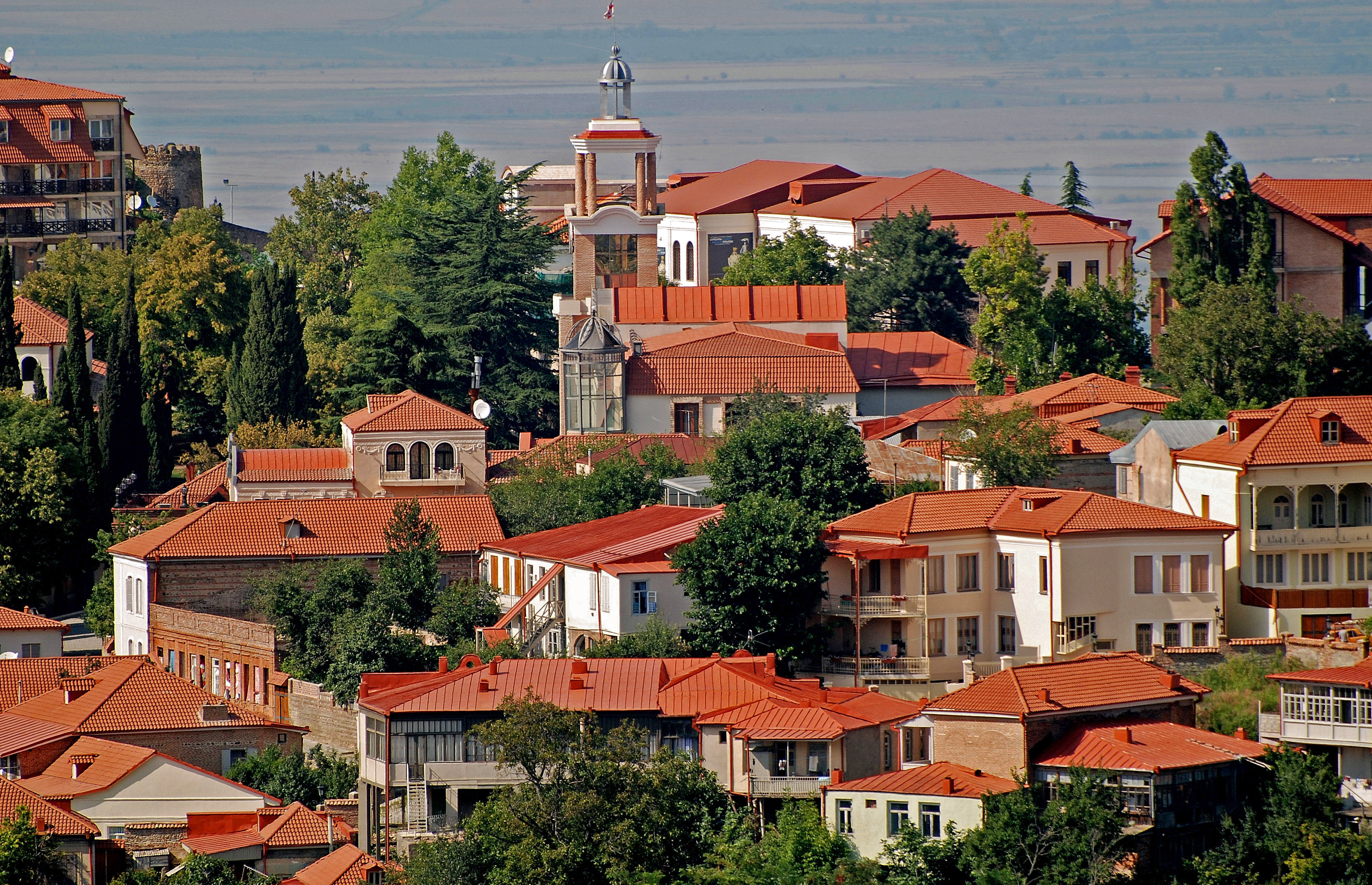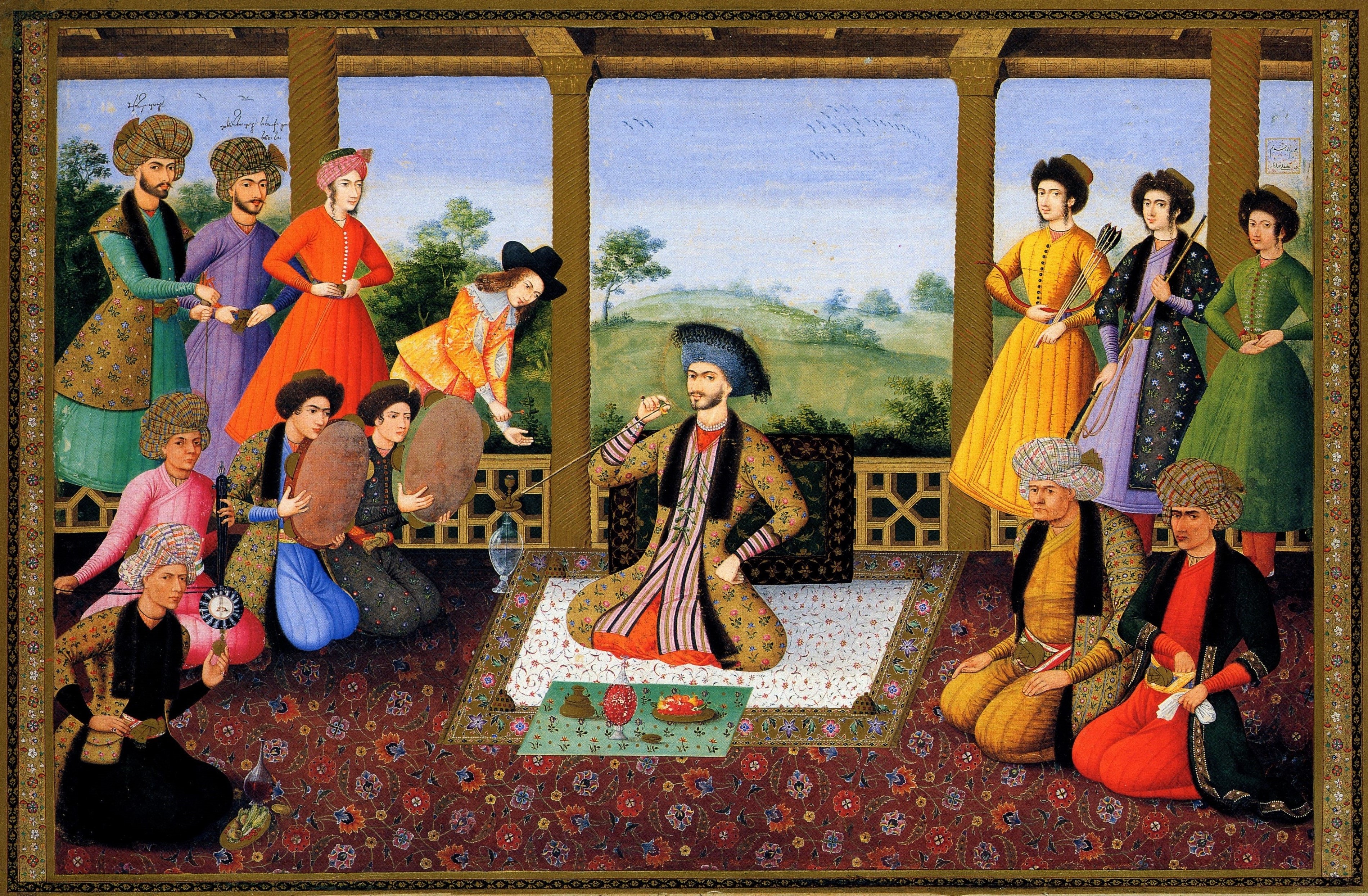|
Kakhetians
''kakhelebi'' , image = Georgian dialects.svg , image_caption = , population = , popplace = Kakheti: 271 298 (82,9%) (2014) , pop1 = , languages = Kakhetian dialect of Georgian language , religions = † Georgian Orthodox ChurchHistorically: Jewish minority. , related-c = Ingiloy people and Iranian Georgians Kakhetians (, ʼɑχɛlɛbi sg. კახელი, ʼɑχɛli are an ethnic subgroup of Georgians who speak the Kakhetian dialect of the Georgian language. Kakhetians are the indigenous population of Kakheti, a historical region and fertile valley in eastern Georgia that produces much of the country's wine. Like the general population of Georgia, most Kakhetians are adherents of the Georgian Orthodox Church. History Kakheti was an independent principality from the end of the eighth century. It was incorporated into the united Georgian Kingdom at the beginning of the eleventh century, but for less than a decade. Only in the beginning of the twelf ... [...More Info...] [...Related Items...] OR: [Wikipedia] [Google] [Baidu] |
Kakheti
Kakheti ( ka, კახეთი ''K’akheti''; ) is a region (mkhare) formed in the 1990s in eastern Georgia from the historical province of Kakheti and the small, mountainous province of Tusheti. Telavi is its capital. The region comprises eight administrative districts: Telavi, Gurjaani, Qvareli, Sagarejo, Dedoplistsqaro, Signagi, Lagodekhi and Akhmeta. Kakheti is bordered by the Russian Federation with the adjacent subdivisions ( Chechnya to the north, and Dagestan to the northeast), the country of Azerbaijan to the southeast, and with the regions of Mtskheta-Mtianeti and Kvemo Kartli to the west. Kakheti has a strong linguistic and cultural identity, since its ethnographic subgroup of Kakhetians speak the Kakhetian dialect of Georgian. The Georgian David Gareja monastery complex is partially located in this province and is subject to a border dispute between Georgian and Azerbaijani authorities. Popular tourist attractions in Kakheti include Tusheti, Gremi, Signagi, Kveter ... [...More Info...] [...Related Items...] OR: [Wikipedia] [Google] [Baidu] |
Ingiloy People
Ingiloys ( az, İngiloylar; ka, ინგილოები) are an ethnographic subgroup of Georgians who speak the Ingiloy dialect of Georgian. Ingiloys are indigenous to Saingilo (formerly known as Hereti), a cultural and historical region in northwestern Azerbaijan. History According to traditional accounts, the name of the Heretians (that is of Ingiloys) originates from the legendary patriarch "Heros", the son of Thargamos, who founded the city of Hereti (later known as Khoranta) at the Alazani River. With the decline of Caucasian Albania, the area was gradually incorporated into the Iberian kingdom, forming one of its duchies (saeristavo). Throughout the 5th century its peoples were eventually assimilated into the Georgians proper. During the Arab occupation the region was a separate kingdom within Georgian cultural and political influence. Hereti eventually became part of the Kingdom of Kakheti and Hereti. The latter was annexed to the Georgian Kingdom in 1104. I ... [...More Info...] [...Related Items...] OR: [Wikipedia] [Google] [Baidu] |
Kingdom Of Kakheti
The Second Kingdom of Kakheti ( ka, კახეთის სამეფო, tr; also spelled Kaxet'i or Kakhetia) was a late medieval/ early modern monarchy in eastern Georgia, centered at the province of Kakheti, with its capital first at Gremi and then at Telavi. It emerged in the process of a tripartite division of the Kingdom of Georgia in 1465 and existed, with several brief intermissions, until 1762 when Kakheti and the neighboring Georgian Kingdom of Kartli were merged through a dynastic succession under the Kakhetian branch of the Bagrationi dynasty. Through much of this period, the kingdom was a vassal of the successive dynasties of Iran, and to a much shorter period Ottoman Empire, but enjoyed intermittent periods of greater independence, especially after 1747. Early history A previous Kingdom of Kakheti was created in the 8th century following the successful rebellion of the mountainous tribes of Tzanaria, which freed a large part of Georgia from Arab control. R ... [...More Info...] [...Related Items...] OR: [Wikipedia] [Google] [Baidu] |
Iranian Georgians
Iranian Georgians or Persian Georgians ( ka, ირანის ქართველები; fa, گرجیهای ایران) are Iranian citizens who are ethnically Georgian, and are an ethnic group living in Iran. Today's Georgia was subject to Iran in the ancient times under the Achaemenid and Sassanian empires and from the 16th century till the early 19th century, starting with the Safavids in power and later Qajars. Shah Abbas I, his predecessors, and successors, relocated by force hundreds of thousands of Christian, and Jewish Georgians as part of his programs to reduce the power of the Qizilbash, develop industrial economy, strengthen the military, and populate newly built towns in various places in Iran including the provinces of Isfahan, Mazandaran and Khuzestan. A certain number of these, among them members of the nobility, also migrated voluntarily over the centuries, as well as some that moved as muhajirs in the 19th century to Iran, following the Russian conqu ... [...More Info...] [...Related Items...] OR: [Wikipedia] [Google] [Baidu] |
Georgians
The Georgians, or Kartvelians (; ka, ქართველები, tr, ), are a nation and indigenous Caucasian ethnic group native to Georgia and the South Caucasus. Georgian diaspora communities are also present throughout Russia, Turkey, Greece, Iran, Ukraine, United States, and European Union. Georgians arose from Colchian and Iberian civilizations of classical antiquity; Colchis was interconnected with the Hellenic world, whereas Iberia was influenced by the Achaemenid Empire until Alexander the Great conquered it. In the 4th century, the Georgians became one of the first to embrace Christianity and now the majority of Georgians are Orthodox Christians, with most following their national autocephalous Georgian Orthodox Church, although there are small Georgian Catholic and Muslim communities as well as a significant number of irreligious Georgians. Located in the Caucasus, on the continental crossroads of Europe and Asia, the High Middle Ages saw Georgian people form ... [...More Info...] [...Related Items...] OR: [Wikipedia] [Google] [Baidu] |
Zagem
Zagem or Bazari ( ka, ბაზარი) was a town in the southeast Caucasus, in the eastern Georgian kingdom of Kakheti. It flourished from the 15th to the 17th century as a vibrant commercial and artisanal centre. In the 1550s, it became a dependency of the Karabakh–Ganja province of Safavid Iran. The fortunes of the town were reversed by Safavid military actions in the area in 1615. By the 1720s, the town had been reduced to an insignificant hamlet. The settlement was located in what is now the Zaqatala District of Azerbaijan, but no evidence of the town remains at the site. The toponym ''Zagem'' is found exclusively in non-Georgian sources; Georgians knew it as Bazari, meaning " bazaar". Etymology and location Called Bazari ("bazaar") in the Georgian sources, the town was variously known to the Persian authors as Zagam, Zagham, or Zakam, and to the European accounts as Zagem, Zagen, Zagain, Zegharn, or Seggen. The non-Georgian forms are probably related to the toponym ' ... [...More Info...] [...Related Items...] OR: [Wikipedia] [Google] [Baidu] |
Principality Of Kakheti
The Kingdom of Kakheti-Hereti ( ka, კახეთ-ჰერეთის სამეფო, tr) or just the First Kingdom of Kakheti was an early Medieval monarchy in eastern Georgia, centered at the province of Kakheti, with its capital first at Telavi. It emerged in 1014 AD, under the leadership of energetic ruler of principality of Kakheti, Kvirike III the Great that finally defeated the ruler of Hereti and crowned himself as a king of the unified realms of Kakheti and Hereti. From this time on, until 1104, the kingdom was an independent and separated state from the united Kingdom of Georgia. The kingdom included territories from riv. Ksani (western border) to Alijanchay river (eastern border) and from Didoeti (northern border) to southwards along the river of Mtkvari (southern border). Establishment of the principality Kakheti had been a part of Kingdom of Iberia, and then a part the Principate of Iberia. However, in the second half of the 8th century, Arab sources al ... [...More Info...] [...Related Items...] OR: [Wikipedia] [Google] [Baidu] |
Georgian Dialects
Georgian (ქართული ''kartuli'') is a Kartvelian language spoken by about 4 million people, primarily in Georgia but also by indigenous communities in northern Turkey and Azerbaijan, and the diaspora, such as in Russia, Turkey, Iran, Europe, and North America. It is a highly standardized language, with established literary and linguistic norms dating back to the 5th century. There are at least 18 dialects of the language. Standard Georgian is largely based on the prestige Kartlian dialect.''Georgian Dialects'' , The ARMAZI project. Retrieved on March 28, 2007 It has over centuries wiped out significant regional linguistic differences within Georgia, particularly through the centralized educational system and the |
South Caucasus
The South Caucasus, also known as Transcaucasia or the Transcaucasus, is a geographical region on the border of Eastern Europe and Western Asia, straddling the southern Caucasus Mountains. The South Caucasus roughly corresponds to modern Armenia, Georgia, and Azerbaijan, which are sometimes collectively known as the Caucasian States. The total area of these countries measures about . The South Caucasus and the North Caucasus together comprise the larger Caucasus geographical region that divides Eurasia. Geography The South Caucasus spans the southern portion of the Caucasus Mountains and their lowlands, straddling the border between the continents of Europe and Asia, and extending southwards from the southern part of the Main Caucasian Range of southwestern Russia to the Turkish and Armenian borders, and from the Black Sea in the west to the Caspian Sea coast of Iran in the east. The area includes the southern part of the Greater Caucasus mountain range, the entire Lesser C ... [...More Info...] [...Related Items...] OR: [Wikipedia] [Google] [Baidu] |
Tsardom Of Russia
The Tsardom of Russia or Tsardom of Rus' also externally referenced as the Tsardom of Muscovy, was the centralized Russian state from the assumption of the title of Tsar by Ivan IV in 1547 until the foundation of the Russian Empire by Peter I in 1721. From 1551 to 1700, Russia grew by 35,000 km2 per year. The period includes the upheavals of the transition from the Rurik to the Romanov dynasties, wars with the Polish–Lithuanian Commonwealth, Sweden and the Ottoman Empire, and the Russian conquest of Siberia, to the reign of Peter the Great, who took power in 1689 and transformed the Tsardom into the Russian Empire. During the Great Northern War, he implemented substantial reforms and proclaimed the Russian Empire after victory over Sweden in 1721. Name While the oldest endonyms of the Grand Duchy of Moscow used in its documents were "Rus'" () and the "Russian land" (), a new form of its name, ''Rusia'' or ''Russia'', appeared and became common in the 15th century. ... [...More Info...] [...Related Items...] OR: [Wikipedia] [Google] [Baidu] |
Safavid Iran
Safavid Iran or Safavid Persia (), also referred to as the Safavid Empire, '. was one of the greatest Iranian empires after the 7th-century Muslim conquest of Persia, which was ruled from 1501 to 1736 by the Safavid dynasty. It is often considered the beginning of modern Iranian history, as well as one of the gunpowder empires. The Safavid Shāh Ismā'īl I established the Twelver denomination of Shīʿa Islam as the official religion of the empire, marking one of the most important turning points in the history of Islam. An Iranian dynasty rooted in the Sufi Safavid order founded by Kurdish sheikhs, it heavily intermarried with Turkoman, Georgian, Circassian, and Pontic GreekAnthony Bryer. "Greeks and Türkmens: The Pontic Exception", ''Dumbarton Oaks Papers, Vol. 29'' (1975), Appendix II "Genealogy of the Muslim Marriages of the Princesses of Trebizond" dignitaries and was Turkish-speaking and Turkified. From their base in Ardabil, the Safavids established control ove ... [...More Info...] [...Related Items...] OR: [Wikipedia] [Google] [Baidu] |




.jpg)
.jpg)

